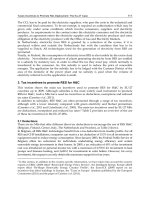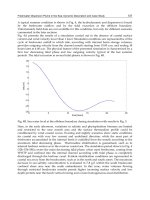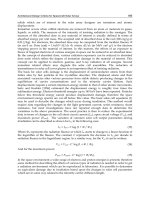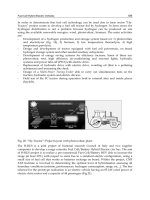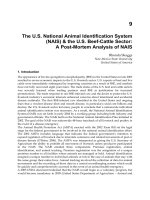Steel Structure Design Part 7 potx
Bạn đang xem bản rút gọn của tài liệu. Xem và tải ngay bản đầy đủ của tài liệu tại đây (435.98 KB, 11 trang )
Cause of incomplete root fusion
•Excessive thick root face
•Too small a root gap
•Misplaced welds
•Too low a power input
•Too low an arc (heat) input
Effect of electrode size on root fusion
•Large diameter electrode
•Small diameter electrode
•As steel is rolled during manufacture,small impurities are
deposited
•Construction of weld metal causes a tear
•Lamellar tearing in T welds
•‘Woody’ surface due to lamellar
tear
1) Method of Detecting Defects in Welds
2) Checklist for Quality Control of Welding
•Most Common and economical. Particular good for
single pass welds
•Generally acceptable for fillet welds
•A procedure of standard checks to be followed by
accredited inspector
•Mainly based on experience of inspector
•Detects surface imperfections only
•Inspection is carried out using a penetrant, cleaner and
developer
•Strong dye penetrant is absorbed into surface discontinuities
by capillary action
•Cleaner is used for pre-cleaning and for removing excess
penetrant
•Developer(e.g. chalk powder suspension) is sprayed on to
reveal any surface cracks
•Detects tight cracks, open to surface
•Detects surface imperfections only
•Use for non-ferromagnetic steel where magnetic particle test
is not applicable
magnetic particles
•Magnetic particles (iron oxide either in liquid or powder
form) are placed onto the surface
•Once the magnetic particles are being magnetized, they will
be collected in cavities or cracks owing to leakage flux to
form a visible indication such as dark lines or points
•Use for ferromagnetic steel only. Not for stainless steel
